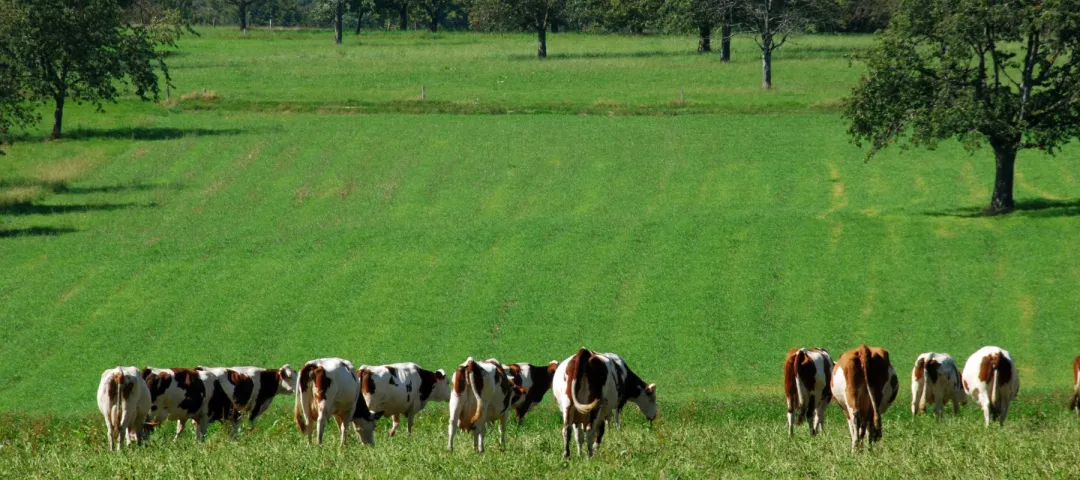General information
RDP Priority
- P1. Knowledge transfer and innovation
RDP Focus Area
- 1A: Innovation & cooperation
RDP Measure
- M16: Cooperation
Beneficiary type
- Public authority / body
Summary
The SYNPAT project, led by the local chamber of agriculture in Jura County, was developed to address several challenges: the lack of agricultural land, the issue of generational renewal, and poorly diversified agriculture mainly focused on milk and wine production. To tackle these multi-factorial issues, the partners gathered all relevant stakeholders (farmers, unions, associations) to create synergies between their activities and better support various agricultural endeavours. Over two years, several actions were organised (workshops, surveys, diagnoses, forums) and an experiment involving a group of municipalities to provide support tools for policymakers.
Results
- A synthesis/inventory of all existing diagnoses on issues affecting the agricultural sector in the area. Findings revealed the potential for the territory to develop different types of crops.
- Organising and disseminating surveys among farmers and potential agricultural project owners.
- Organising a workshop for civil servants and elected representatives to raise awareness about new entrants in agriculture and to present tools that municipalities could use to address land and agriculture issues.

Promoter
Chamber of Agriculture of the Jura County
Funding
Total budget 60 000 (EUR)
EAFRD: 30 000 (EUR)
National/Regional: 30 000 (EUR)
Ressources
Documents
Liens
Context
The SYNPAT project was launched in Jura County, in the Bourgogne-Franche-Comté region in France. As an agricultural area, the territory is facing major issues, including challenges related to generational renewal, since 45% of farmers in the area are expected to retire in the next 10 years. Moreover, agricultural production is concentrated in two sectors: protected designation of origin (PDO) milk production and wine-growing, leaving little space for other types of crops.
There is a strong demand to develop local food systems and a need for available land for new farmers. While different networks operated in the area, providing support to farmers and newcomers in agriculture, they were not well structured and worked in isolation.
In response to these structural challenges of the agricultural sector, Jura County's chamber of agriculture launched the SYNPAT project, which brought together the Coeur de Jura group of municipalities in collaboration with an impact network (which gathers agricultural associations), the land development and rural establishment companies (SAFER), and the Montmorot agricultural vocational training centre. SYNPAT stands for 'create synergies between agricultural projects in the territory' and highlights the need to improve dialogue and cooperation among all stakeholders involved in agriculture.
Objectives
The project objectives were to:
- Encourage diversified agricultural activities.
- Promote land transfer and generational renewal in agriculture.
- Strengthen dialogue, exchange and cooperation at all levels between project owners, existing farmers and support structures (local and national associations, agricultural networks, chambers of agriculture).
- Create synergies between projects so that everyone can achieve their objectives.
- Experiment with concrete solutions within a group of municipalities, focusing on the availability of agricultural land and local food systems.
Activities
To meet these objectives, the partners led activities across four key axes:
- Axis 1 – Producing an inventory of all existing diagnoses by subject and area, complemented by an 'agrarian diagnosis'. The partners gathered various diagnoses to ensure sufficient information was available before designing solutions or tools. During the project, they also benefited from an 'agrarian diagnosis' conducted by two university students in agroecology. This diagnosis examined the history of agricultural production in the territory and identified successful technical and economic practices.
- Axis 2 – Collecting survey feedback on the area's potential and organising a first forum open to all stakeholders. To build on the first axis, the partners conducted surveys among farmers and potential agricultural project owners. They extended their reach beyond the municipalities involved in the project, gathering feedback from farmers working in diversified agricultural systems (other than wine and milk). To conclude, the partners organised a forum to share the feedback and testimonies collected.
- Axis 3 – Working with local stakeholders to clarify expectations, obstacles, and leverage points, followed by a co-design process for possible solutions during a second forum. The partners collaborated with farmers to identify leverage points and obstacles regarding available land and the diversification of agricultural practices. They organised a 'propositions forum' to gather ideas and identify relevant themes for the next steps. For each theme, the goal was to determine how farmers could be supported by structures working in these fields. The criteria for selecting themes included feasibility (human and financial resources) and relevance to local challenges.
- Axis 4 – Conducting awareness-raising activities among local authorities on the development of agricultural projects and the tools available to support such actions. Finally, the partners launched a workshop involving elected representatives and civil servants to raise awareness about new entrants in agriculture. They also presented tools that municipalities could use to address land and agriculture issues and to better support both farmers and the development of local food systems.
Main results
The project led to several results:
- Axis 1 – A synthesis of the diagnoses from the Coeur du Jura group of municipalities was produced, along with an agrarian diagnosis focusing on four points: landscape and agriculture, the evolution of agricultural models since the mid-20th century, technical/economic aspects linked to agriculture and future trajectories for agriculture in the Jura area. The findings revealed the potential for the territory to develop different types of crops.
- Axis 2 – Ten surveys were distributed among farmers and local stakeholders working on the topic (such as those creating synergies with other farmers). Another ten surveys were launched among farmers and project owners not involved in any synergy projects. Subsequently, a forum was organised in August 2021, which welcomed 49 participants.
- Axis 3 – Ten surveys were launched among stakeholders representing agricultural sectors or farmers' unions. A second forum was organised, gathering 22 stakeholders in October 2021. The stakeholders worked from the results of the four themes chosen during the first forum to identify initial challenges: agricultural land, the pathway for project owners to become farmers, the territory, and the human factor and support for project owners.
- Axis 4 – A workshop was organised with civil servants and elected representatives. The workshop focused on three questions: who are the farmers who wish to develop diversified agriculture, and what are their projects? Which tools can municipalities use to foster local food systems? What are the possibilities for the future?
Key lessons
- The project led to improved dialogue among all stakeholders in the agricultural sector. It clarified the role of each organisation (such as the chamber of agriculture) and associations at territorial level, resulting in complementary interventions.
- The partner municipalities discovered tools and identified contact persons to support them in developing a more diversified local agriculture.
Elodie Matter

